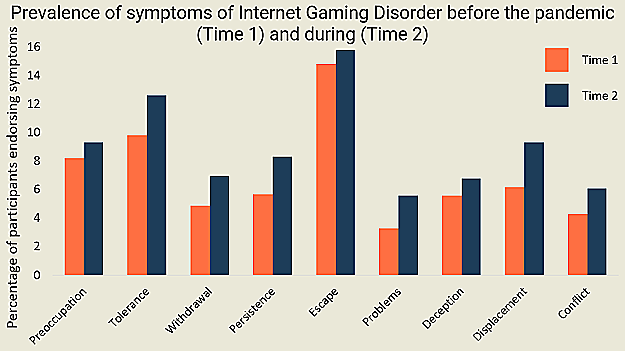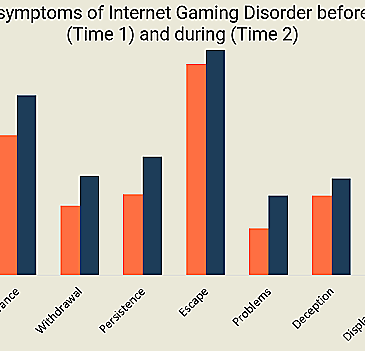Many of us have been spending more time in front of screens since the COVID-19 pandemic began, and this often includes time spent gaming. While some in the psychiatric community are still debating whether Internet Gaming Disorder is a unique mental health condition (versus a consequence of other conditions), it does seem clear that teens who meet the proposed criteria report some harmful outcomes. This week, STASH reviews a study by Taika Oka and colleagues on the impact of COVID-19 on the prevalence and risk factors of probable Internet Gaming Disorder and Problematic Internet Use.
What was the research question?
Among Japanese adults, how has the COVID-19 pandemic affected the rates of probable Internet Gaming Disorder and Problematic Internet Use?
What did the researchers do?
The researchers extended a previous study on problematic smartphone use from the pre-COVID period (December 2019) to examine the effects of the pandemic. This original study asked participants to complete surveys with measures assessing their smartphone use as well as Internet Gaming Disorder and Problematic Internet Use symptoms. A subsample of participants completed subsequent questionnaires in August 2020. The researchers chose this subsample based on their problematic smartphone use, with each quintile equally represented. Participants also answered new questions regarding their experiences during the pandemic.
What did they find?
Overall the rates of probable1 Internet Gaming Disorder and Problematic Internet Use during the pandemic were 4.1% and 7.8%, respectively. Rates of probable Internet Gaming Disorder and Problematic Internet Use increased about 1.5 times from before the pandemic to during. Some characteristics, including being male and being younger than 40, increased the risk of reporting Internet Gaming Disorder or Problematic Internet Use symptoms. Most notably, participants who believed they contracted COVID-19 were 5.67 times more likely than those who did not contract it to report symptoms consistent with one of the two disorders. All 9 symptoms of Internet Gaming Disorder were also more common during the pandemic than before (see Figure).

Figure. The prevalence of symptoms of Internet Gaming Disorder before and during the pandemic. Values are estimated from the figure provided by Oka et al. (2021). Click image to enlarge.
Why do these findings matter?
These findings are important for two reasons. First and foremost, to the extent that the sample represented all Japanese adults, it suggests that Internet Gaming Disorder and Problematic Internet Use are significant issues that impact a meaningful percentage of the population. Secondly, this study shows that these two conditions have been exacerbated by the pandemic and may need community prevention, outreach, and interventions to curb.
Every study has limitations. What are the limitations in this study?
Unlike several other countries, Japan did not have a traditional lockdown. The effects of the pandemic on problematic gambling/internet use might be even more severe in places that did. Another limitation is that Internet Gaming Disorder and Problematic Internet Use have yet to be recognized as unique psychiatric diagnoses and thus will have evolving diagnostic criteria as we learn more.
For more information:
Individuals who may be worried about their gaming may find support at The Massachusetts Council on Gaming and Health. If you are concerned about your internet use more generally, The University of Texas at Austin Counseling and Mental Health Center has information about problematic internet use. Additional resources can be found on our Addiction Resources page.
— John Slabczynski
What do you think? Please use the comment link below to provide feedback on this article.
________________
[1] This study did not provide diagnoses for either condition. However, the authors used survey responses to identify individuals who scored above a pre-set threshold on Internet Gaming Disorder or Compulsive Internet Use scales.




